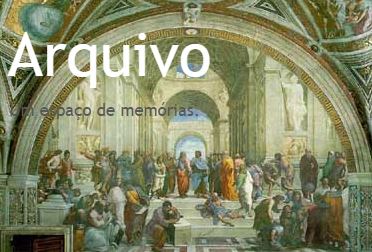When I'm studying, I often need to summarize the ideas that I assimilate. It is an important exercise in my learning process. Transforming this mental operation in dynamic imaging has been a very interesting challenge during this course.
Here is the thrust of my reading the post by George Siemens on being a transparent learner: Teaching as transparent learning.
Here is the thrust of my reading the post by George Siemens on being a transparent learner: Teaching as transparent learning.
COMMENT
The Siemens's post that gave me the support to the achievement of my learning object is an importante source of ideas about of transparency.
It starts by title: Teaching the transparent learning. In this expression the act of teaching is diluted in the teacher's own learning, because the way it teaches is transparent. And transparency in this context is an invitation to participate in the conversation through the work that is in blogs, articles, books: "My work on blogs, articles, handbooks, and so on is an invitation to engage in conversation, not a proclamation of what I absolutely know." So in addition to sharing their work, teachers promote the discussion not to show what they know, but to develop ideas.
In the process, Siemens knows that he isn't alone. Others, like him, have contributed to that learning is transparent:
"There are many others. All have contributed to my learning by being willing to share how they develop and advance ideas."
Another concept that I found interesting in this article was the peer-to-peer learning. About his work with Stephen Downes for CCK08, Siemens underlines the fact that the two were only two nodes on the network:"As the course facilitators, we were active in sharing our ideas and views, but we were only two nodes in multi-node network. "
Therefore, it is important share ideas and opinions with those who can guarantee a peer to peer learning. ( "The varying cognitive architecture of those who are new to a subject and those with significant experience provides support to the value of peer-to-peer learning."). It is easier to share knowledge, experiences, frustrations and be understood by those who are on the same level of learning than we do:
"Transparency in expressing our understanding, our frustrations, and our insights helps others who are at a similar stage. "
In our course in Pedagogical Processes in e-Learning, it was promoted transparency, since all activities were published online, as well as peer to peer learning, visible, for example, in the third activity of each unit, where we had to write a review in the forum on two learning objects published by colleagues.
It starts by title: Teaching the transparent learning. In this expression the act of teaching is diluted in the teacher's own learning, because the way it teaches is transparent. And transparency in this context is an invitation to participate in the conversation through the work that is in blogs, articles, books: "My work on blogs, articles, handbooks, and so on is an invitation to engage in conversation, not a proclamation of what I absolutely know." So in addition to sharing their work, teachers promote the discussion not to show what they know, but to develop ideas.
In the process, Siemens knows that he isn't alone. Others, like him, have contributed to that learning is transparent:
"There are many others. All have contributed to my learning by being willing to share how they develop and advance ideas."
Another concept that I found interesting in this article was the peer-to-peer learning. About his work with Stephen Downes for CCK08, Siemens underlines the fact that the two were only two nodes on the network:"As the course facilitators, we were active in sharing our ideas and views, but we were only two nodes in multi-node network. "
Therefore, it is important share ideas and opinions with those who can guarantee a peer to peer learning. ( "The varying cognitive architecture of those who are new to a subject and those with significant experience provides support to the value of peer-to-peer learning."). It is easier to share knowledge, experiences, frustrations and be understood by those who are on the same level of learning than we do:
"Transparency in expressing our understanding, our frustrations, and our insights helps others who are at a similar stage. "
In our course in Pedagogical Processes in e-Learning, it was promoted transparency, since all activities were published online, as well as peer to peer learning, visible, for example, in the third activity of each unit, where we had to write a review in the forum on two learning objects published by colleagues.
* Edited the February 25, 2010, to add the comment.





Sem comentários:
Enviar um comentário